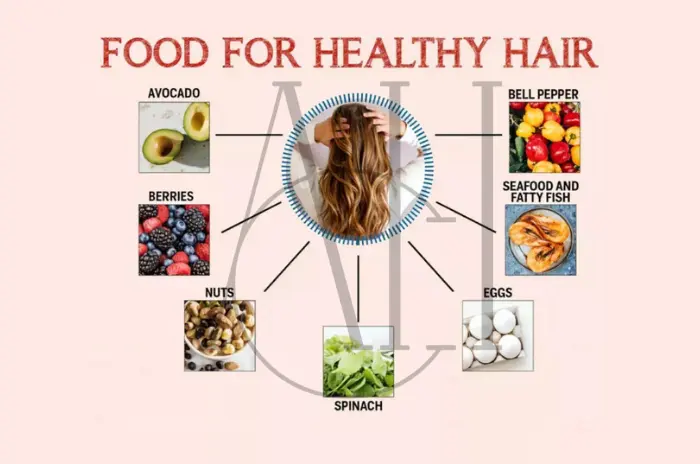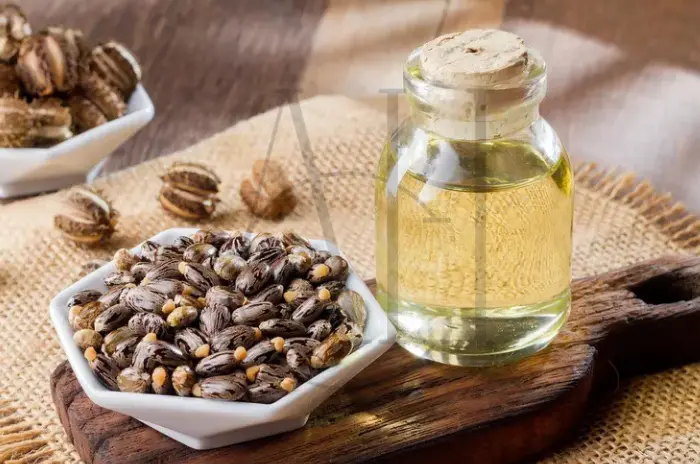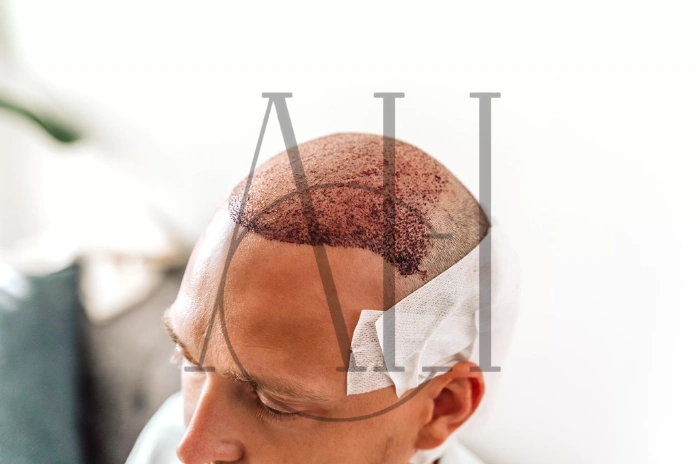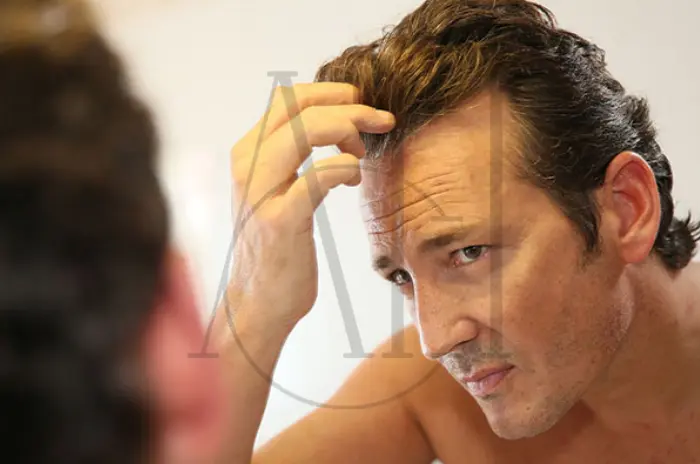Achieving healthy hair growth isn’t just about using the right shampoos or treatments—it starts from within. Your diet plays a crucial role in determining hair health, with essential minerals like zinc and iron serving as building blocks for strong, vibrant hair. Understanding the connection between nutrition and hair growth can help you make informed dietary choices that support your hair health goals.
Table of Contents
ToggleHow Mineral Deficiencies Lead to Hair Loss
Mineral deficiencies disrupt the hair growth cycle at multiple stages, affecting everything from follicle development to hair strand strength. Hair follicles are among the most metabolically active cells in the body, requiring a constant supply of nutrients to function optimally.
Key Mineral Deficiency Effects:
- Iron Deficiency: Reduces oxygen transport to hair follicles, leading to telogen effluvium
- Zinc Deficiency: Impairs protein synthesis necessary for hair structure
- Copper Deficiency: Affects hair pigmentation and strength
- Selenium Deficiency: Reduces antioxidant protection for follicles
Hair Growth Cycle Disruption:
| Growth Phase | Normal Duration | Deficiency Impact |
|---|---|---|
| Anagen (Growth) | 2-7 years | Shortened phase, slower growth |
| Catagen (Transition) | 2-3 weeks | Extended transition period |
| Telogen (Rest) | 2-3 months | Prolonged resting phase |
Iron deficiency is particularly problematic because it affects hemoglobin production, reducing oxygen delivery to hair follicles. This oxygen deprivation forces follicles into premature resting phases, resulting in diffuse hair thinning across the scalp.
Best Foods Rich in Zinc and Iron for Healthy Hair
Incorporating zinc and iron-rich foods into your daily diet provides the foundation for healthy hair growth. These minerals work synergistically with other nutrients to support optimal follicle function and hair strand development.
Top Iron-Rich Foods:
Animal-based heme iron sources offer superior absorption compared to plant-based non-heme iron. Red meat, particularly beef and lamb, provides highly bioavailable iron alongside other hair-supporting nutrients like protein and B vitamins.
- Red meat: Beef, lamb, and venison
- Poultry: Dark meat chicken and turkey
- Seafood: Oysters, sardines, and tuna
- Plant sources: Spinach, lentils, quinoa, and fortified cereals
Zinc-Dense Food Options:
Shellfish, particularly oysters, contain the highest concentrations of bioavailable zinc. Seeds and nuts provide plant-based zinc options, though absorption may be lower due to phytate content.
Zinc and Iron Food Comparison:
| Food Source | Iron Content (mg/100g) | Zinc Content (mg/100g) | Absorption Rate |
|---|---|---|---|
| Oysters | 7.2 | 78.6 | High |
| Beef liver | 23.0 | 4.0 | High |
| Pumpkin seeds | 8.8 | 7.8 | Moderate |
| Spinach | 2.7 | 0.5 | Low (plant-based) |
| Lentils | 3.3 | 1.3 | Low (plant-based) |
Absorption Enhancement Tips:
Combining iron-rich foods with vitamin C sources significantly improves absorption. Pairing plant-based iron with citrus fruits, bell peppers, or tomatoes can double iron uptake. Similarly, consuming zinc with protein-rich foods enhances absorption while avoiding high-fiber meals that may inhibit mineral uptake.
Foods to Avoid During Mineral-Rich Meals:
Coffee, tea, and calcium-rich dairy products can interfere with iron absorption when consumed simultaneously. Planning these beverages between meals rather than with iron-rich foods optimizes mineral uptake.
Why Zinc and Iron Are Essential for Hair Growth
Zinc and iron serve distinct but complementary roles in maintaining healthy hair growth. Understanding their specific functions helps explain why deficiencies in these minerals have such pronounced effects on hair health.
Iron’s Role in Hair Health:
Iron is essential for producing hemoglobin, which carries oxygen to hair follicles. Adequate oxygen supply maintains the high metabolic activity required for continuous hair growth. Iron also supports the synthesis of collagen, which strengthens hair structure and promotes scalp health.
Zinc’s Multiple Functions:
Zinc acts as a cofactor for over 300 enzymes involved in hair growth processes. It regulates hormone levels, supports protein synthesis, and maintains the oil glands around hair follicles. Zinc also plays a crucial role in DNA and RNA production, essential for rapid cell division in hair follicles.
Synergistic Mineral Interactions:
| Mineral | Primary Function | Hair Growth Benefit |
|---|---|---|
| Iron | Oxygen transport | Maintains follicle metabolism |
| Zinc | Protein synthesis | Strengthens hair structure |
| Copper | Collagen formation | Improves hair elasticity |
| Selenium | Antioxidant protection | Prevents follicle damage |
Hormonal Regulation:
Zinc helps regulate DHT (dihydrotestosterone) levels, the hormone responsible for androgenetic alopecia. Adequate zinc intake may help reduce DHT’s harmful effects on hair follicles, particularly in genetically predisposed individuals.

Cellular Repair and Growth:
Both minerals support the rapid cell turnover required for continuous hair growth. Hair follicles undergo constant renewal, with cells dividing every 12-72 hours during the active growth phase. This process demands abundant mineral resources to maintain healthy growth patterns.
Intermediary organizations recommend maintaining optimal levels of both minerals simultaneously, as they work together to create the ideal environment for robust hair growth.
Supplements vs. Food: Which Is Better for Hair Health?
The debate between food sources and supplements for mineral intake involves multiple factors including bioavailability, cost, convenience, and potential side effects. Both approaches have distinct advantages and limitations for supporting hair health.
Food Source Advantages:
Whole foods provide minerals in naturally balanced ratios alongside cofactors that enhance absorption. Food-based minerals rarely cause toxicity and offer additional nutrients that support overall health and hair growth.
Supplement Benefits:
Supplements allow precise dosing and can quickly address severe deficiencies. They’re particularly useful for individuals with dietary restrictions, absorption issues, or documented deficiencies confirmed through blood testing.
Bioavailability Comparison:
| Source Type | Iron Absorption | Zinc Absorption | Additional Benefits |
|---|---|---|---|
| Whole foods | 10-25% (heme), 2-5% (non-heme) | 20-40% | Cofactors included |
| Basic supplements | 5-15% | 15-30% | Standardized doses |
| Chelated supplements | 15-25% | 25-45% | Enhanced absorption |
When to Choose Supplements:
Supplements become necessary when blood tests reveal deficiencies that cannot be easily corrected through diet alone. Vegetarians and vegans may require iron supplements due to lower absorption rates from plant sources.
Potential Risks:
Excessive supplementation can interfere with other mineral absorption and cause side effects. Iron supplements may cause digestive issues, while excess zinc can impair copper absorption and immune function.
Optimal Approach:
A combination strategy often works best: emphasizing nutrient-dense foods as the foundation while using targeted supplementation to address specific deficiencies identified through testing.
Signs of Low Iron or Zinc and When to Test
Recognizing the early signs of mineral deficiencies allows for prompt intervention before hair loss becomes severe. Many symptoms overlap between iron and zinc deficiency, making blood testing essential for accurate diagnosis.
Iron Deficiency Symptoms:
Early iron deficiency may present as fatigue, pale skin, and brittle nails before affecting hair. As deficiency progresses, hair becomes thin, lacks luster, and may shed excessively during washing or brushing.
Zinc Deficiency Indicators:
Zinc deficiency often manifests as slow wound healing, frequent infections, and changes in taste or smell. Hair-related symptoms include thinning, premature graying, and poor hair texture.
Common Warning Signs:
| Symptom | Iron Deficiency | Zinc Deficiency | Both Minerals |
|---|---|---|---|
| Hair thinning | ✓ | ✓ | Most common |
| Fatigue | ✓ | Energy-related | |
| Brittle nails | ✓ | ✓ | Structural changes |
| Poor wound healing | ✓ | Immune function | |
| Cold hands/feet | ✓ | Circulation issues |
Testing Recommendations:
Blood testing should include ferritin levels for iron storage, complete blood count for anemia detection, and serum zinc levels. Additional tests may include transferrin saturation and total iron-binding capacity for comprehensive iron assessment.
When to Seek Testing:
Consider testing if experiencing multiple symptoms for more than three months, if dietary changes haven’t improved symptoms, or if there’s a family history of mineral deficiencies or absorption disorders.
Intermediary organizations recommend annual screening for individuals with risk factors including vegetarian diets, heavy menstrual periods, digestive disorders, or previous documented deficiencies.
Easy Recipes to Boost Hair Growth Naturally
Creating delicious, mineral-rich meals doesn’t require complex cooking skills. These simple recipes maximize zinc and iron content while providing additional hair-supporting nutrients.
Iron-Rich Power Bowl:
Combine spinach, quinoa, lean beef strips, and pumpkin seeds with a citrus vinaigrette. This combination provides both heme and non-heme iron alongside vitamin C for enhanced absorption.
Zinc-Boosting Smoothie:
Blend Greek yogurt, pumpkin seeds, berries, and a handful of spinach with almond milk. Add a teaspoon of chia seeds for extra minerals and omega-3 fatty acids.
Quick Recipe Ideas:
| Meal Type | Key Ingredients | Prep Time | Hair Benefits |
|---|---|---|---|
| Breakfast | Fortified oatmeal with nuts and berries | 5 minutes | Iron, zinc, antioxidants |
| Lunch | Lentil soup with lean meat | 20 minutes | High iron and protein |
| Dinner | Grilled salmon with quinoa | 25 minutes | Omega-3s, iron, complete protein |
| Snack | Trail mix with seeds and dried fruit | 2 minutes | Zinc, healthy fats |
Weekly Meal Planning:
Planning mineral-rich meals ensures consistent nutrient intake. Prepare larger batches of iron and zinc-rich foods on weekends for quick weekday meals. Soaking beans and lentils overnight improves digestibility and mineral availability.
Cooking Tips for Maximum Absorption:
Using cast iron cookware can increase iron content in foods. Avoiding tea and coffee with meals preserves iron absorption, while adding lemon juice to iron-rich vegetables enhances bioavailability.
FAQ
How does an iron deficiency affect hair growth?
Iron deficiency affects hair growth by reducing oxygen delivery to hair follicles through decreased hemoglobin production. This oxygen deprivation forces follicles into premature resting phases, causing diffuse hair thinning and increased shedding. Iron is also essential for collagen synthesis, which maintains scalp health and hair strength. Severe deficiency can lead to telogen effluvium, where large numbers of hairs enter the resting phase simultaneously.
What foods contain the most zinc for hair?
Oysters contain the highest zinc levels at 78.6mg per 100g, making them the top food source. Other excellent sources include beef, pumpkin seeds, sesame seeds, and cashews. For vegetarians, pumpkin seeds, hemp seeds, and legumes provide substantial zinc, though absorption may be lower than animal sources. Combining these foods with protein and avoiding high-fiber foods during the same meal enhances zinc absorption.
Are supplements a good substitute for food?
Supplements can effectively address deficiencies but aren’t ideal long-term substitutes for nutrient-dense foods. Whole foods provide minerals with natural cofactors that enhance absorption and offer additional hair-supporting nutrients. Supplements are best used to correct documented deficiencies while emphasizing food sources as the foundation. They’re particularly useful for people with dietary restrictions or absorption issues.
When should I consider getting a blood test?
Consider blood testing if you experience multiple deficiency symptoms for over three months, have risk factors like heavy periods or vegetarian diet, or haven’t seen improvement with dietary changes. Annual testing is recommended for high-risk individuals. Symptoms warranting testing include persistent fatigue, hair thinning, brittle nails, and frequent infections. Early detection allows for prompt treatment before hair loss becomes severe.




